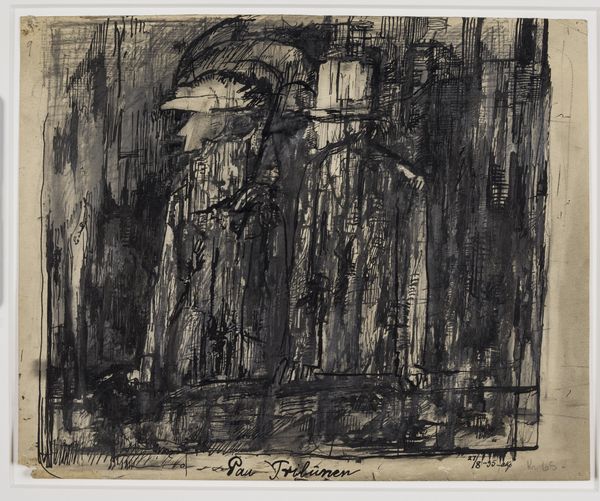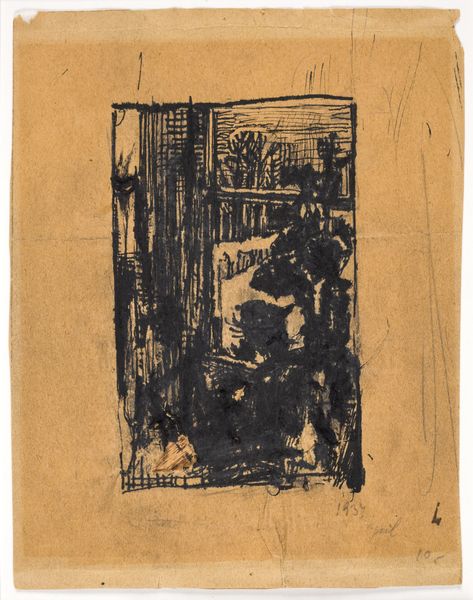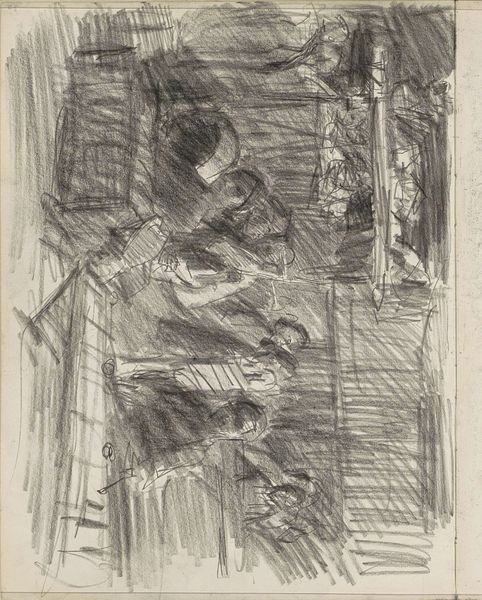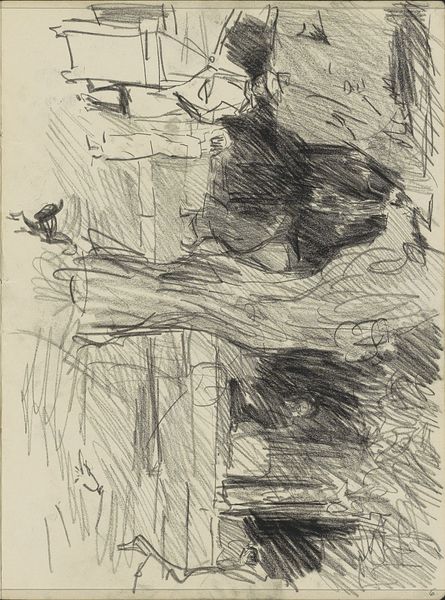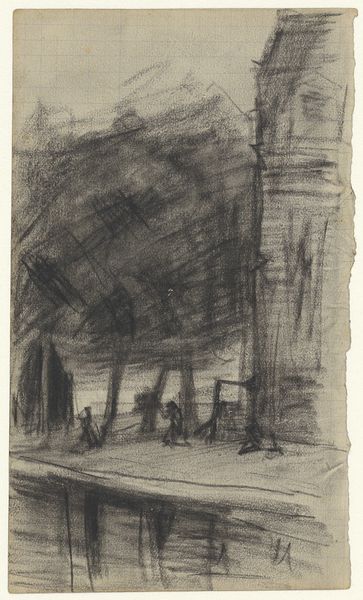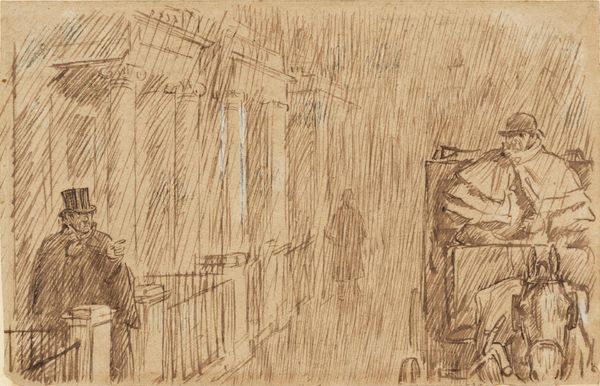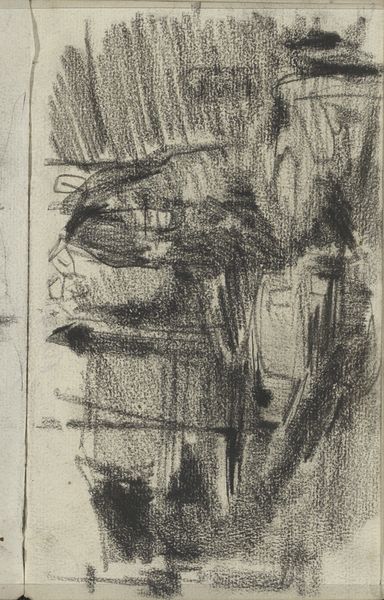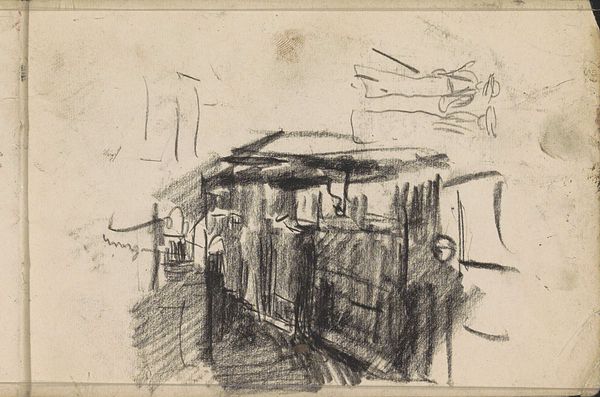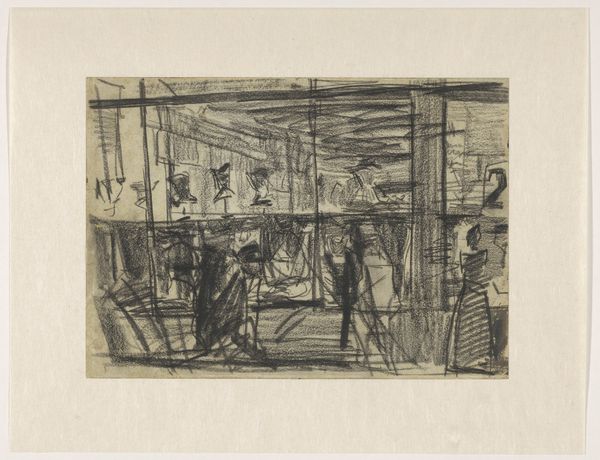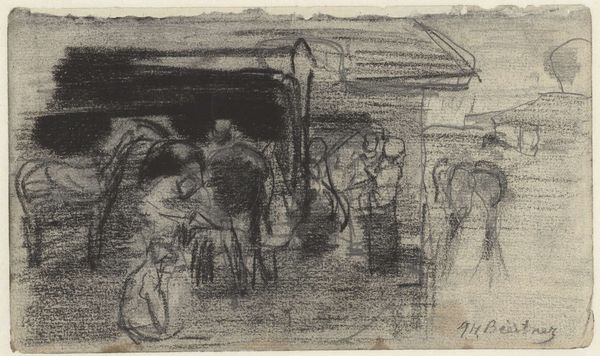
drawing, paper, ink, pencil
#
drawing
#
ink painting
#
impressionism
#
pencil sketch
#
landscape
#
paper
#
form
#
ink
#
pencil
#
line
#
genre-painting
#
realism
Dimensions: 126 mm (height) x 136 mm (width) (bladmaal)
Curator: "Aften i kostalden," or "Evening in the Cowshed," an 1885 drawing by Theodor Philipsen currently residing here at the SMK, seems deceptively simple. What are your initial thoughts? Editor: Chaotic. Look at the frantic, cross-hatched lines – almost like a child scribbled all over the paper with ink and pencil. What am I actually looking at, besides a messy material process? Curator: It's organized chaos! Those lines give incredible depth to the space. The cows looming from the dark feel weighty, primal even. Their very essence comes through, a connection to a rural past. See how they loom large in the foreground, almost obscuring the sparse light filtering in. It recalls an agrarian ideal. Editor: Ideal? Or idealized? Look closer at the paper, its cheapness perhaps suggesting a quick study rather than some grand statement. The rapid strokes betray the efficiency needed to capture this fleeting moment within a farm's working conditions. The darkness you romanticize speaks more plainly of the hard labor taking place there, from raw material, ink, pencil and paper used up for an evening sketch. Curator: Consider the cows themselves –symbols of nourishment, domesticity, perhaps even fertility in the collective unconscious. They occupy that dimly lit interior like gentle deities. Philipsen isn't just documenting a barn; he's tapping into something far older, a shared visual language. The very darkness suggests a place of incubation. Editor: Incubating profit, I'd say. Those cows aren't mystical beings but units of production. Philipsen likely knew the value of each animal, the daily milk yield contributing to the farm's economy. These rapid sketches and impressions weren’t just about art but are part of that larger world of dairy farming and agricultural material life in 19th-century Denmark. And look - he has clearly focused his skill, not on depicting what looks ‘artistic’ but what is, by far, a quick way to use available materials to an immediate end. Curator: So, for you, it's less about the emotional impact and more about its relationship to the historical context. Still, perhaps both things co-exist. Editor: They must. The means of producing images such as this always mediate the potential meanings people attach to it over time. Curator: A potent reminder of how an image both reflects and shapes cultural memory. Editor: And of the labor involved in the whole ecosystem of its creation and our viewing of it.
Comments
No comments
Be the first to comment and join the conversation on the ultimate creative platform.
